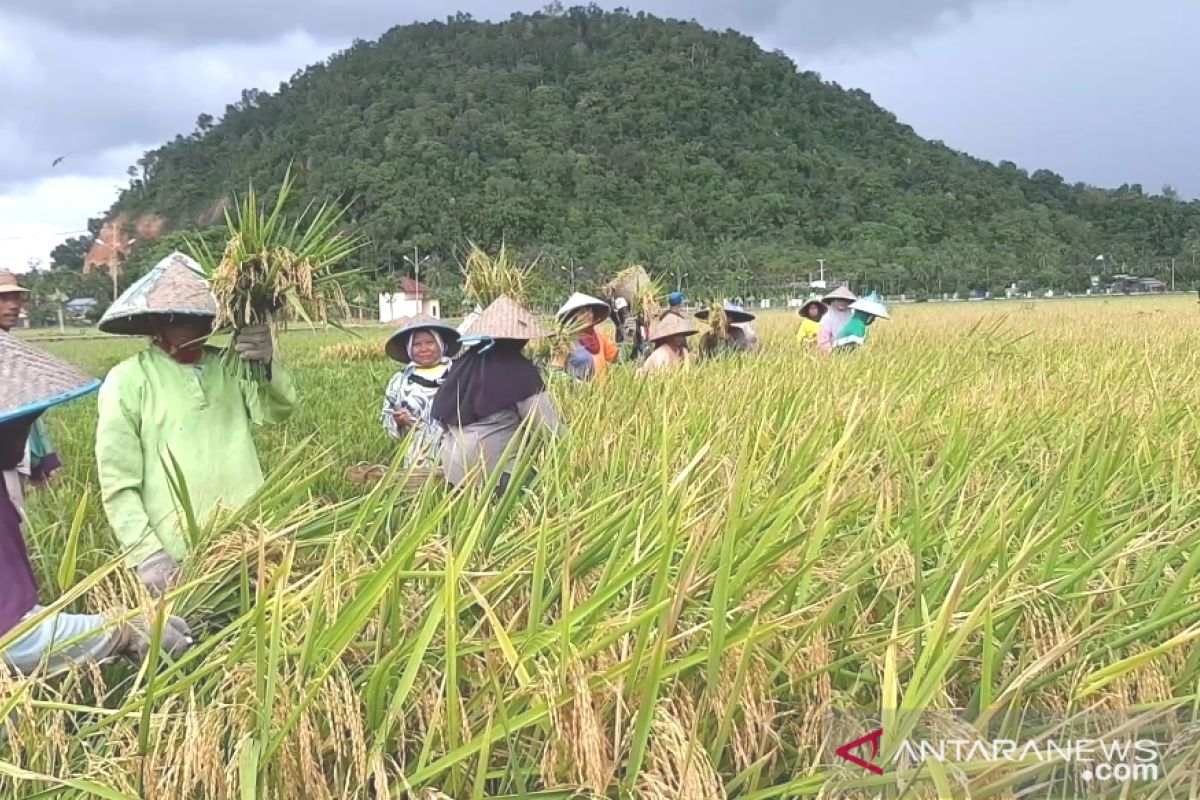This was revealed in a study by the World Bank that also indicated that just miniscule changes in supply and demand are increasingly sensitive to changes in commodity prices.
Regarding rice trade at the international level, the Center for Indonesian Policy Studies (CIPS) is keen that rice be exported as a diplomatic measure, such as to several countries that were hit by disasters or can potentially become Indonesia's rice market in future.
CIPS Assyifa researcher Szami Ilman, in a written statement, vouched for rice exports as an instrument of diplomacy and can open the gap for intensifying relations between nations.
"Rice exports are expected to serve as an instrument of Indonesian diplomacy with other countries. Indonesia has often followed this practice and should be maintained," he noted.
Moreover, Ilman remarked that it could gradually turn out to be one of the strategies to introduce Indonesian rice to other nations, coupled with the revision of regulations and also adjusting the quality standards of rice in accordance with the global demand.
He warned that the rice export discourse echoed by Bulog (the Logistics Agency) leader Budi Waseso in January was getting stronger, as he noted that the harvesting period would end soon. If the absorption of rice reaches the target, a surplus 300 thousand tons of rice can potentially be exported.
However, Ilman cautioned that this export potential did not come without its challenges, specifically the discourse of excessive medium rice exports risked being in conflict with Trade Ministerial Regulation Number 1 of 2018 and also technical challenges in the form of quality adjustments to meet the demand in the international market.
Currently, he noted that medium rice exports are yet not permitted and only premium and special rice may be exported.
Cost of goods sold
Ilman also brought up the issue of the low cost of goods sold (HPP) that was viewed as being one of the obstacles in the realization of rice absorption by Bulog.
He pointed out that if Bulog is keen to witness a higher absorption rate, then it should be given access to offer a more competitive standard of Dry Grain Harvest Price.
Moreover, he stated that Bulog's rice absorption until April 2019 had only reached some 17 percent of the predetermined absorption target of 1.8 million tons in 2019.
To this end, it is better if the government reviews the existence of HPP and also the legal basis for the implementation of HPP is regulated in Presidential Instruction (Inpres) No. 5 of 2015 that indicates it has been running for some four years.
Currently, HPP GKP (Dry Grain Harvest) is priced at Rp3,700 per kilogram, with price flexibility of 10 percent. Hence, this means Bulog can offer a purchase price of around Rp4,050 per kilogram.
This figure is slightly lower than the results of the survey by the International Rice Research Institute (IRRI) that stated rice production costs had reached Rp4,482 per kilogram in 2014.
"The current figures are still slightly lower than the survey results of international institutions, and the survey shows results for 2014.Moreover, in 2019, several factors have led to price fluctuations, including inflation, transportation costs, and changes in profit margins that farmers are increasing from year to year," Ilman remarked.
In response to this situation, he noted that the government should review the relevance of sale price (HPP,) and if deemed necessary, they recommend that the HPP amount be updated in line with the current market conditions.
However, in the long term, the polemic of the low absorption of Bulog rice will potentially recur in future, so a type of periodic updating effort is necessary.
Moreover, other ways to ensure affordable rice prices for consumers and to ensure the prosperity of farmers are interventions in terms of production and distribution through government programs that are also integrated with the application of technology.
The highest retail price
Downstream, the Ministry of Trade has also urged businesspersons to collaborate to implement policies on the highest retail prices or HET of rice for the public market, modern stores, and other retail sales venues.
Head of the Ministry of Trade's Trade Assessment and Development Agency, Kasan stated in Bandarlampung that this was in line with Trade Ministerial Regulation Number 57 / M-DAG / PER / 8/2017 on Determination of the Highest Retail Price of Rice.
Kasan noted that the trade minister's regulation was clear, so businesspersons can conduct their activities in line with existing regulations.
"If businesses are found to be stockpiling or violating regulations, we will undoubtedly synergize with the local government or local agencies to reprimand them and also to revoke their business licenses," Kasan emphasized.
The Ministry of Trade had also recommended modern retailers to put up or erect banners displaying information on the availability of rice, simple packaged cooking oil, sugar, and frozen meat according to the HET.
In the meantime, Deputy Chairperson of RI DPR Commission IV Daniel Johan was seeking a balance between the level of production and that of the farmer grain sales, taking into account the fact that at several locations, Bulog's warehouse capacity was assessed as being full but facing distribution constraints.
Johan noted that at several places, Bulog's warehouse capacity was reportedly full, while on the other hand, the institution was no longer distributing prosperous rice.
Import
In connection with the issue of imports, CIPS board member Arianto Patunru suggested that rice prices should be used as an indicator of whether to import commodities that are the staple food of the community.
"We will see the simplest of prices. If the prices are high, it is indicative of scare availability, so then it is pertinent to import," Patunru noted.
Patunru noted that if prices are high, the availability of rice in the market decreases and fails to meet the community's requirements, so imports can also be an option to cater to supply shortages and stabilize the prices.
However, he remarked that it could be conducted if price movements were deemed insufficient to overcome the scarcity of rice supply.
He also called on the government to utilize technology to monitor rice production, as it is believed to prevent conflict between government agencies that often have differing data on food commodities.
EDITED BY INE









